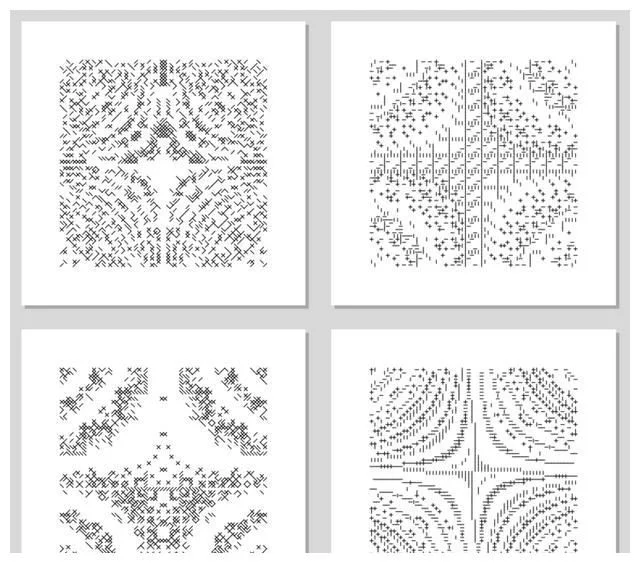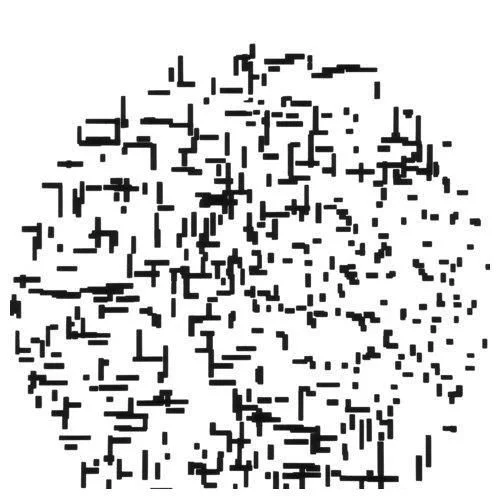Unveiling the Team Behind CryptoPunks and Meebits: From Game Developers to NFT Pioneers
This article was published by Block Rhythm, original title: "The Team Behind CryptoPunks and Meebits: An NFT Hit-Making Machine with Just Two People," author: 0x13.
On May 4, the somewhat quiet NFT space erupted again as Larva Labs launched their third NFT project—Meebits.
The sale of Meebits adopted a Dutch auction model, starting at a price of 2.5 ETH, with the price gradually decreasing after a period of no trading volume. However, backed by the Larva Labs brand, Meebits sold out in a very short time, with an average price of 2.4 ETH.
In just three days, the total trading volume of Meebits in the secondary market reached 12,000 ETH, approximately 42 million USD, significantly higher than the seven-day trading volume of the currently hottest NFT collectible project, CryptoPunks. On the first day of trading for Meebits in the secondary market, OpenSea recorded a daily trading volume of 23.1375 million USD, setting a new historical high.
A skyscraper rises from the ground.
Some may wonder, what exactly is Larva Labs, and why do its NFT projects attract such a frenzy? How can its NFT projects navigate through the vast and chaotic NFT trading market so successfully?
Before the Transformation
Larva Labs, which translates to "Larva Laboratory" in Chinese, is best known for launching CryptoPunks. Before the "larvae" transformed into "butterflies," Larva Labs was just a small software company specializing in developing mobile applications for iPhone and Android, with only John Watkinson and Matt Hall as its two members.
John and Matt have known each other for a long time. They both entered the University of Toronto to study computer science in 1994. After graduation, Matt worked as a software engineer at Agency.com, Modus, and Columbia University Medical Center, while John chose to continue his studies, completing a master's degree in computer science at the University of Toronto after seven years, and then pursuing a PhD in electrical engineering and genetics at Columbia University.
In 2005, the two decided to start a business and co-founded Larva Labs. At that time, the internet had only developed for a few years, and they positioned Larva Labs as a "small independent mobile software developer," primarily focused on developing apps. With the launch of the iPhone in 2007, mobile applications became a new trend.
Larva Labs also created some hit mobile games, such as "Trism," which generated sales of 250,000 USD in the first two months on the Apple App Store.

Like many developers, the two founders of Larva Labs expressed various complaints due to issues with centralized platforms while searching for their positioning. They could never have imagined that years later, they would earn nearly 80 million USD in a single day from a decentralized project.
The Birth of CryptoPunks
Fast forward to 2017, which may have been the most important year in John and Matt's lives.
In early 2017, John created a "pixel character generator," which allowed them to create many cool pixel character avatars. However, they initially didn't know what to do with this generator. Should they create some characters for a new game? That seemed a bit boring, but what else could they do? Their ideas were proposed and rejected one by one until they learned about blockchain and Ethereum.
John and Matt ultimately decided to bring these pixel avatars onto the blockchain, allowing their uniqueness to be verified and enabling ownership. These pixel avatars, inspired by the 20th-century cypherpunk movement, became true collectibles. Time would prove that this decision was incredibly correct.
"This is an experiment," Matt said, feeling extremely anxious and uncertain about whether the idea could be realized, whether the technology could work, and whether people would accept virtual collectibles.
At that time, the ERC-721 and ERC-1155 standards widely used in the NFT field had not yet been created, and the Ethereum community was just getting started, with little information about Solidity development and responses on Stack Overflow. Therefore, all they could do was modify the ERC-20 standard.
Thus, they had to feel their way through the process, and sure enough, they made a huge mistake.
Initially, John and Matt reserved 1,000 CryptoPunks for themselves and gave away all the others for free. Within about a week, all the CryptoPunks were claimed. Once the primary market closed, trading in the secondary market began to flourish.
John and Matt embedded a trading market in the smart contract, intending to allow users to easily trade their CryptoPunks. In their vision, if a user wanted to bid 1 ETH to buy a certain CryptoPunk, another user could list it for sale at 1 ETH, and the smart contract would facilitate the transaction. Everything seemed to be progressing smoothly.
Until one day, a user tweeted, "I sold my CryptoPunk for 1 ETH, but I didn't receive any money."
This sparked a wave of concern, prompting John and Matt to check the smart contract. They discovered that the issue was that the smart contract did not allocate the buyer's money to the seller; instead, it returned it to the buyer. This meant that after spending 1 ETH, the buyer not only received the CryptoPunk but also got back the 1 ETH they spent.
Before this incident, people had high hopes for CryptoPunks and felt proud to own one, but such a flaw was catastrophic.
Finding the problem in the contract and fixing it seemed straightforward. However, to ensure that everyone still retained their CryptoPunk, they would need to rerun countless transactions, requiring John and Matt to pay thousands of dollars in gas fees, which was no small amount. More challenging was whether they could still be trusted by the community after this incident, and whether members of the CryptoPunk community would continue to recognize the value of CryptoPunks.
John and Matt nervously informed the community about the issue, admitted their mistake, and told people that CryptoPunks needed to migrate to a new smart contract. Surprisingly, no one opposed this; everyone agreed and chose to continue supporting them. "No one complained, saying, 'I only accept the old smart contract,'" John and Matt were overjoyed, as this truly made them feel the power of community.
Thus, the problem was quickly resolved, and John and Matt added a "bidding" feature, allowing people to bid on a CryptoPunk. The money spent by the buyer would be stored in the smart contract, and when the seller accepted the bid, the transaction would proceed immediately, creating a dedicated small market for each CryptoPunk.
What followed is a story everyone is familiar with: CryptoPunks exhibited offline in Zurich and quickly sold out, with secondary market trading volume peaking at 4,200 ETH (around 7.5 million USD at the time), and in the second quarter of 2021, they would be auctioned at Christie's and Sotheby's.

"I think we are artists now."
Larva Labs' second project did not achieve the same level of fame as CryptoPunks, but it also showcased John and Matt's genius creativity.

This project is called Autoglyphs, a blockchain character generation art NFT project. Unlike CryptoPunks, where each NFT has a concrete pattern, Autoglyphs is much more abstract, with seemingly simple and chaotic characters hiding intricate meanings.
This series of artworks was inspired by the works of 1960s generative artists Michael Noll and Ken Knowlton, who, due to limited computer storage capacity at the time, could only use simple characters to piece together their art.

Michael A Noll, Computer Composition with Lines, 1964
John and Matt aimed to challenge not computer storage capacity but blockchain storage capacity.
When creating CryptoPunks, they chose to store image files on Larva Labs' off-chain servers rather than on-chain. Although this faced the risk of tampering, it easily avoided the issue of blockchain storage capacity.
However, this time, John and Matt wanted to try storing Autoglyphs on the blockchain. Traditional jpg or png image files were too large, so they had to choose to create using characters.
"We had to write a concise yet efficient code, and the output of the work had to be minimal data or text. These constraints made it incredibly challenging for us," John and Matt repeatedly tried to create countless generators, rewriting their code into smart contracts until they finally found the most suitable one. Even so, transaction fees were still frighteningly high; at that time, the Ethereum block gas limit was 8 million, and generating one Autoglyphs NFT cost 3 million. Nevertheless, they chose to continue.
Strictly speaking, what is stored on the blockchain is not an image but just a piece of code. When you want to view the image, the code runs to generate it.
John and Matt said that the Autoglyphs series NFTs are a tribute to the generative artists of the 60s and 70s. When they launched CryptoPunks and began exploring the digital realm, they found that the art from that era had not received much attention and appreciation, which was incredibly regrettable.
In an interview shortly after launching Autoglyphs, when asked by the host what their current identity was, whether they were still "small independent mobile software developers," John replied, "I think we are artists now."
Hello, Metaverse
From symbolizing the cypherpunk movement and igniting the crypto world with CryptoPunks to paying homage to 60s generative art with Autoglyphs, John and Matt have been depicting the world and spirit they love and respect in their own way. Their third project, Meebits, represents their enthusiasm for the metaverse.
Meebits was already highly anticipated before its official launch. True Ventures partner and renowned investor Kevin Rose tweeted a preview of the project: "I just saw an early preview of the next NFT project from the CryptoPunks team, Larva Labs. Oh my God, get your ETH ready."

This undoubtedly heightened everyone's expectations for the project, and the results proved that the anticipation was well-founded.

Meebits is more like an "upgraded version of CryptoPunks," transforming from pixel avatars to voxel figures, along with different elements and rarity mechanics commonly used in NFT collectibles, attracting countless users to participate in the rush to buy. However, if this were the only change, it wouldn't be enough to say this is an excellent and innovative work. More importantly, these previously static "figurines" can now move.
These freely moving figures can be adapted to any metaverse. The metaverse can be said to be the hottest concept recently, regarded as the next form of the internet and the virtual world where people will socialize, entertain, work, and live in the future. In this virtual world, having a Meebits character "skin" would be incredibly cool.
Larva Labs is a pioneer in NFTs, having opened the door to the NFT world through CryptoPunks. At the same time, Larva Labs has always been doing what they truly want to do, depicting the world they love through their works, from cypherpunk to generative art to the metaverse. While it is uncertain where Larva Labs' next series of works will aim, there is no doubt that they will continue to create precious collectibles exclusive to Generation Z and all digital natives.










